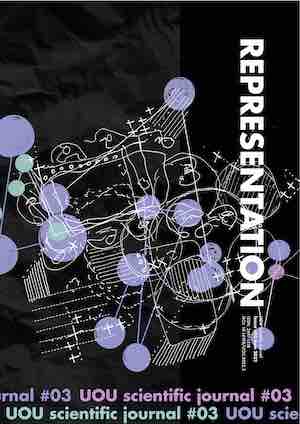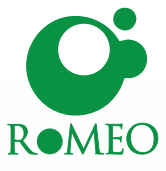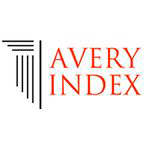Narrative Processes in Architectural Design
Abstract
Keywords: representation, narrative, subjectivity, temporality, spatiality, digital tools, analog tools
This article focuses on the aims and content of the elective course entitled Narrative Processes in Architectural Design, which we instruct as four lecturers in architecture departments of various universities. Our observations and thoughts on the need for such a course in the field of architectural design are based on contemporary critiques of the education and practice of architectural design. This critical view questions the role of representational practices in architectural design and their uses. The Cartesian way of thinking distinguished the positions of the ‘thinker (designer) and the builder’. This paradigm caused architects to lose the position of being the "builder" and eventually gain the status of "describer of what to do to the builder", and therefore the importance of representation tools increased. Since the 15th century, individuality and subjectivity have advanced as intellectual thoughts, and positivism took the place of sacredness. Within these ideological perspectives, we have been engaging with the reality in which the rational, universal, measurable and observable reached hegemonic power. These ideologies also suppress immeasurable feelings and experiences. One of the most important results of this paradigm in architecture is that the discipline has turned into an object-oriented thought and practice. An object-oriented practice prefers to deal with measurable dimensions, geometries, materials, rather than immeasurable phenomena such as feelings, experiences, and atmosphere.
Our critical view for the role of representation in architectural design and our course formed around this framework. The course aims at reintegrating everyday narratives into architectural practices through representation. Approaches of the course to this critique can be described on three main themes; subjectivity, temporality and spatiality. The course is designed in modules and each module relates to these three themes in distinct ways.
Despite the ambiguity of subjective experiences and feelings, the course aims to reintegrate them into thinking and production. In several modules of the course, we look at space not as an object but as phenomena that includes events. This approach is essential in terms of temporality, which is another main theme of the course. Time-space can only be considered as an experience. We discuss temporal constructions in two ways within the scope of the course; fragmented and linear.
The third theme of the course is spatiality. While addressing the theme of spatiality, two main approaches are emphasized; tabula rasa and articulation to the existing. Throughout the history of architecture, on the one hand, people experienced the destructive imaginations of the futurists and the desire of the modernists for building cities from scratch, and on the other hand, other approaches were suggesting to discover and articulate the memories and traces of the city. Both of these discussions offer distinct possibilities for the discipline of architecture. The course brings daily narratives back to the agenda of architecture through representational approaches to these three themes. Therefore, the course offers subjective, temporal and spatial narrative productions.
Downloads
References
BENJAMIN, Walter. Illuminations: Essays and Reflections. Hannah ARENDT, ed. New York: Schocken Books, 2019.
GERARDS, Sebastiaan., BLEECKERE, Sylvain de. Narrative Architecture:Designer’s Story. New York and London: Routledge, 2017.
COATES, Nigel. Narrative Architecture. West Sussex: Wiley, 2012.
DELEUZE, Gilles. Cinema 2: The Time-Image. Minneapolis: University of Minnesota Press, 2001.
DELEUZE, Gilles. Bergsonism. New York: Zone Books, 1991.
HUSSERL, Edmund. The Crisis of European Sciences and Transcendental Phenomenology: An Introduction to Phenomenology Philosophy. Evanston: Northwestern University Press, 1970
LE CORBUSIER. Towards a New Architecture. Connecticut: Martino Publishing, 2014.
LEFEBVRE, Henri. The Production of Space. Oxford: Blackwell, 1991.
LOCKE, John. An essay concerning human understanding. Peter H. NIDDITCH, ed. Oxford: Clarendon Press, 1979.
LYOTARD, Jean-François. The Postmodern Condition: A Report on Knowledge. Minneapolis: University of Minnesota Press, 1984
MARINETTI, Flippo Tommasa. The Futurist Manifesto. 1909. Retrieved from: https://www.societyforasianart.org/sites/default/files/manifesto_futurista.pdf
PSARRA, Sophia. Architecture and Narrative: The Formation of Space and Cultural Meaning. New York: Routledge, 2009.
RANCIERE, Jacques. The Emancipated Spectator. London and New York: Verso, 2009.
ROSSI, Aldo. The Architecture of the City. Cambridge: MIT Press, 1982.
TSCHUMI, Bernard. Screenplays. 1976. Retrieved from http://www.tschumi.com/projects/50/
TSCHUMI, Bernard. The Manhattan Transcripts. London: Academy Editions, 1994.
Downloads
Published
How to Cite
Issue
Section
License
Copyright (c) 2022 Gürbey Hiz, Didem Sağlam, Beril Sezen, Tutku Sevinç

This work is licensed under a Creative Commons Attribution 4.0 International License.
The authors keep their rights upon their work, although they transfer, in a non-exclusive way, the rights of exploitation (reproduction, publication, distribution, public dissemination and presentation) to the Journal. The authors are, therefore, free to enter additional, separate contracts for the non-exclusive distribution of the version of the work published in the Journal (for instance, by hosting in an institutional repository or publication in a book), provided credit is given that the work was initially published in this journal. The works are published under a Creative Commons Attribution 4.0 (CC BY 4.0) license.












